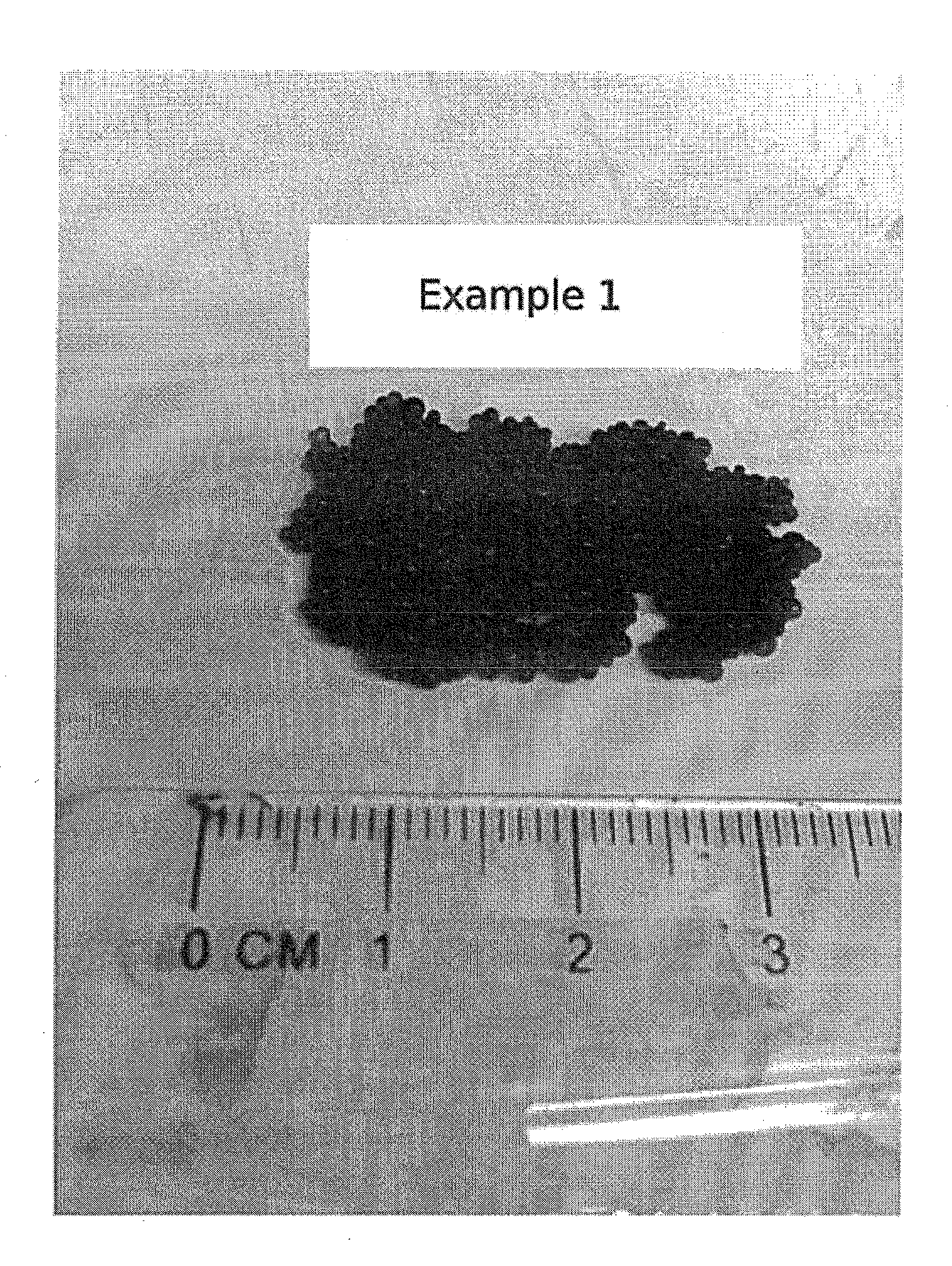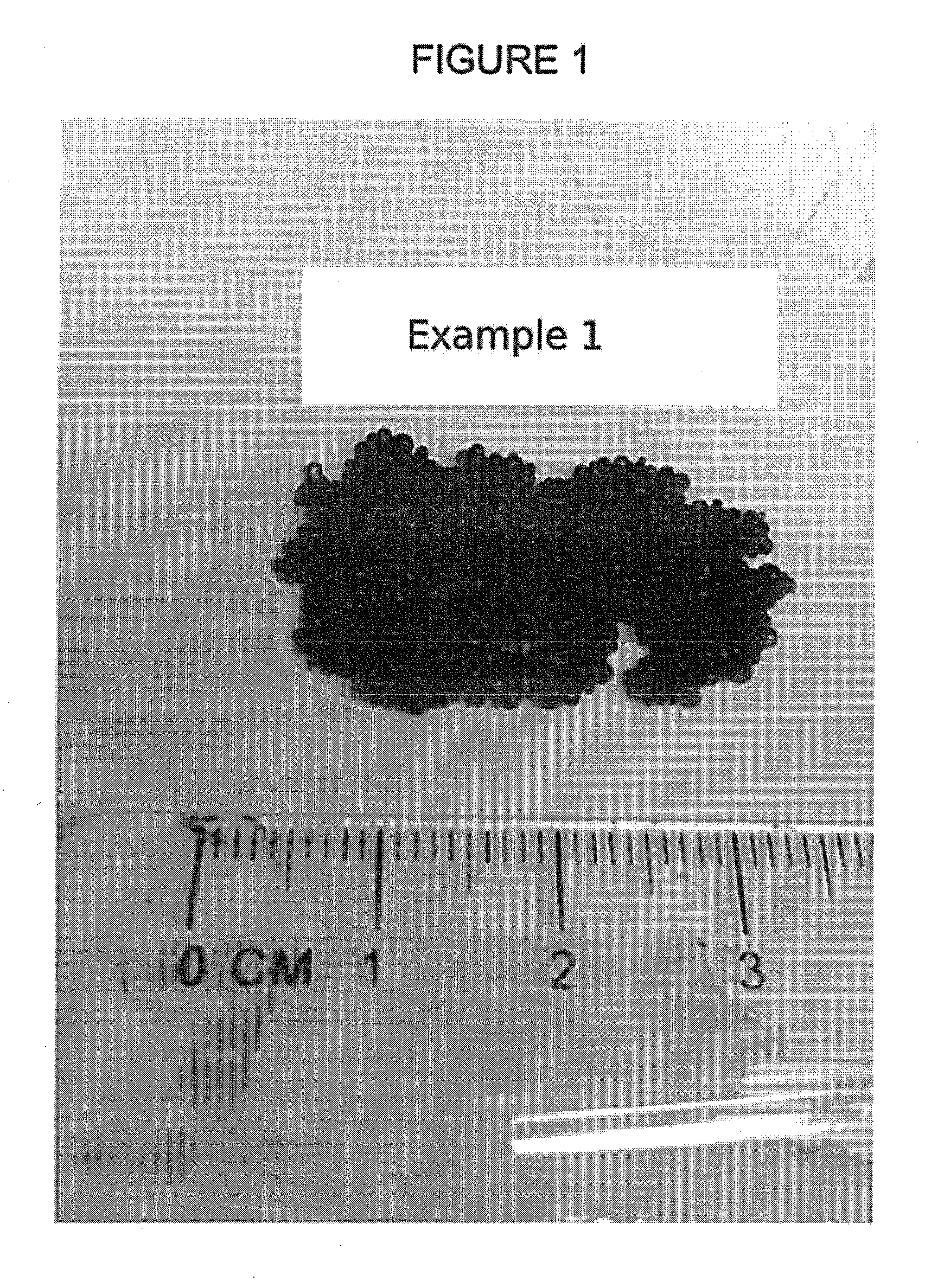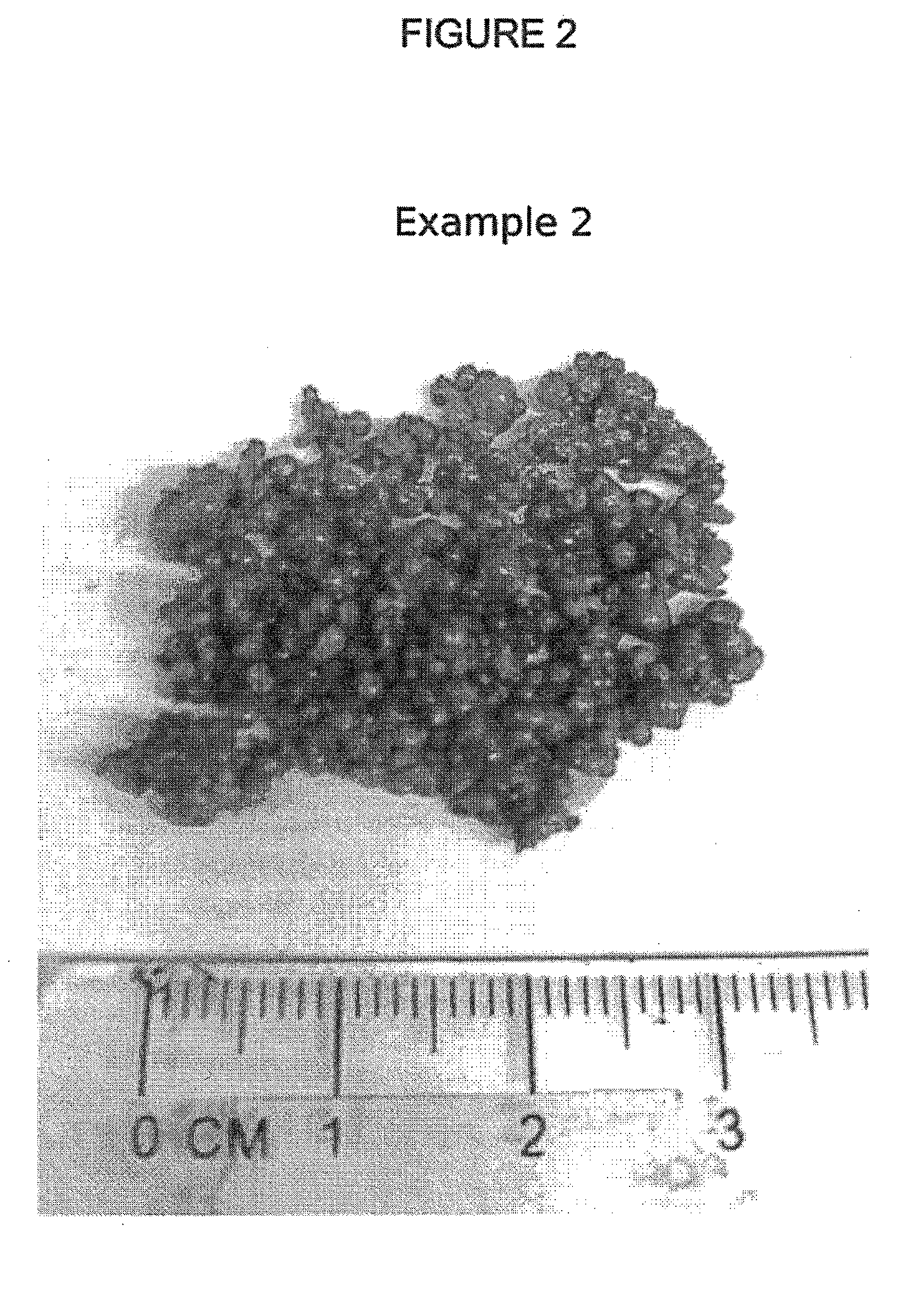Methods for making polymer particulates in gel form
a technology of polymer particles and gels, which is applied in the direction of lighting and heating apparatus, chemical/physical processes, drying solid materials, etc., can solve the problems of difficult and expensive monolithic polymer gels to produce and convert into the end product, affecting the performance of aerogels, xerogels or cryogels produced therefrom, and requiring significant amount of energy, time and specialized equipmen
- Summary
- Abstract
- Description
- Claims
- Application Information
AI Technical Summary
Benefits of technology
Problems solved by technology
Method used
Image
Examples
examples
[0161]In order to provide a better understanding of the foregoing discussion, the following non-limiting examples are offered. Although the examples may be directed to specific embodiments, they are not to be viewed as limiting the invention in any specific respect. All parts, proportions, and percentages are by weight unless otherwise indicated.
example i
[0162]About 360 grams of resorcinol, about 10.8 grams of ammonium acetate, about 720 grams of deionized water, and about 253 grams acetic acid were added to a reactor and heated to a temperature of about 45° C. After the mixture was heated to about 45° C., about 531 grams of formaldehyde was slowly added to the reactor over the course of about 60 minutes to provide a reaction mixture. After adding the formaldehyde to the reactor the reaction mixture was pre-reacted until a refractive index of about 1.4078 was reached. The pre-reacted mixture or “pre-polymer” was then cooled down to a temperature of about 25° C. and placed into collection bottles. One collection bottle of the pre-polymer was stored in a cold room at a temperature of about 4° C. to about 5° C. overnight.
[0163]The next day about 1.2 liters of WESSON® vegetable oil and were added to a 1 gallon reactor equipped with a heating mantle, a cooling coil, and a mechanical agitator. The vegetable oil was stirred via the mechani...
example ii
[0164]About 387.12 grams of resorcinol, about 5.43 grams of ammonium acetate, about 1,115.37 grams of deionized water, and about 69.72 grams acetic acid were added to a reactor and heated to a temperature of about 45° C. After the mixture was heated to about 45° C., about 423 grams of formaldehyde was slowly added to the reactor over the course of about 80 minutes to provide a reaction mixture. After adding the formaldehyde to the reactor the reaction mixture was pre-reacted until a refractive index of about 1.3940 was reached. The pre-reacted mixture or “pre-polymer” was then cooled down to a temperature of about 25° C. and placed into collection bottles. One collection bottle of the pre-polymer was stored in a cold room at a temperature of about 4° C. to about 5° C. overnight.
[0165]The next day about 250 grams of paraffin oil and a magnetic stir bar were added to a beaker located on a hot plate (Corning PC-351). The magnetic stir bar was started by turning the stir dial to the 2.5...
PUM
| Property | Measurement | Unit |
|---|---|---|
| temperature | aaaaa | aaaaa |
| temperature | aaaaa | aaaaa |
| temperature | aaaaa | aaaaa |
Abstract
Description
Claims
Application Information
 Login to View More
Login to View More - R&D
- Intellectual Property
- Life Sciences
- Materials
- Tech Scout
- Unparalleled Data Quality
- Higher Quality Content
- 60% Fewer Hallucinations
Browse by: Latest US Patents, China's latest patents, Technical Efficacy Thesaurus, Application Domain, Technology Topic, Popular Technical Reports.
© 2025 PatSnap. All rights reserved.Legal|Privacy policy|Modern Slavery Act Transparency Statement|Sitemap|About US| Contact US: help@patsnap.com



